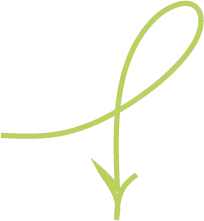Every drop of water counts for your thirsty landscape and your water bill! The heat and high temperatures of the summer can stress your new as well as your established landscape, making it susceptible to pests and diseases. Keeping your landscape healthy and in top condition through this difficult time reinforces the health of your investment.
Smart Watering Tips for Plants
Root-Level WateringRemove the spray nozzle when watering with a hose and let water slowly soak into the roots, or utilize a soaker hose for optimal root hydration.
Daily MonitoringDuring extreme heat and drought, check plants daily and water at the first signs...
Read The Rest
Proper Watering Is Critical To The Success Of Your Landscape
Proper watering during the establishment period is critical to your landscape's long-term success. The right amount and frequency of watering depends on multiple factors, including temperature, season, soil type, and root system development. Follow these expert guidelines to ensure your new plants thrive in their environment.
Essential Watering Techniques
Direct Root WateringAlways water plants individually using a hand-held hose without a nozzle. Allow water to slowly soak into the base of each plant. Quick spraying from a distance is ineffective for proper hydration.
Tree CareFor optimal tree hydration, use a Gator Bag system. These specialized watering bags ensure consistent moisture delivery to your...
Read The Rest
Helpful Tips For the 2nd Season & Beyond
Proper fertilization is essential for maintaining the health, beauty, and longevity of your landscape investment. While your newly installed plants have been professionally fertilized during installation, understanding proper ongoing fertilization is key to your landscape's long-term success.
Essential Fertilization Guidelines
First Year CareYour plants received professional fertilization during installation. No additional fertilization is needed during the first growing season, allowing roots to establish naturally.
Annual MaintenanceBeginning in the second growing season, annual deep root fertilization is strongly recommended to maintain plant health and vitality. This process delivers nutrients directly to the root zone where they're needed most.
Key BenefitsRegular fertilization promotes robust growth, enhances...
Read The Rest
Annual Pruning is Key for Healthy Plants & Perennials
Proper pruning is essential for maintaining the health, shape, and vitality of your landscape investment. While newly installed plants may show some initial stress from transplanting, understanding proper pruning techniques and timing will ensure your plants thrive for years to come.
Essential Pruning Guidelines
Initial CareRemove any brown or dead branches from newly installed plants using clean, sharp hand pruners. This normal transplant stress will diminish as plants establish.
Professional MaintenanceAnnual professional pruning is recommended to ensure proper techniques and timing, maintaining optimal plant health and aesthetic appeal.
Tools and TechniquesUse quality hand pruners for most pruning tasks. Power shears should be reserved only...
Read The Rest
Guard From Insects, Mulch, Deer & Winter Elements
Protecting your landscape investment from environmental stresses and wildlife damage is crucial for maintaining its beauty and vitality. Learn how to safeguard your plants against common threats through proper preventive care and professional protection services.
Insect & Disease Management
Early DetectionRegularly inspect plants for warning signs such as leaf discoloration, distorted growth, or unusual spots. Early identification of problems prevents extensive damage.
Professional DiagnosisIf you notice any plant abnormalities, our Specialty Gardeners provide expert diagnosis and targeted treatment recommendations for optimal plant health.
Preventive CareRegular monitoring and maintenance help prevent pest and disease issues before they become severe. Our integrated pest management approach focuses...
Read The Rest
Important Care For Your New Sod Installation
A new sod installation is a significant investment in your property's beauty and value. Proper aftercare during the critical establishment period ensures your new lawn develops a strong root system and lasting vitality. Follow these essential care guidelines for the best results.
Essential Watering Guidelines
Initial Care PeriodMaintain consistent moisture for the first three weeks until sod is fully rooted. All areas must remain consistently moist throughout this establishment period.
Critical AreasPay extra attention to edges along sidewalks, driveways, and patios as these areas dry more quickly and need additional water. Ensure water penetrates 2 inches below sod level.
Moisture TestingCheck moisture levels by...
Read The Rest
Watering and Mowing Instructions
A newly seeded lawn requires careful attention during its establishment period to ensure proper germination and root development. Following these essential care instructions will help transform your seeded areas into a lush, healthy lawn.
Critical Watering Guidelines
Initial MoistureKeep seeded areas consistently moist, maintaining dark soil color. This is especially critical during sunny and windy conditions when soil dries quickly.
Watering ScheduleWater multiple times throughout the day - morning, noon, and evening. Light, frequent watering is more effective than a single heavy application. Avoid creating puddles or overwatering.
Germination PeriodExpect germination between 5-21 days, depending on soil temperature and moisture levels. Consistent moisture during...
Read The Rest
Keep Your Sprinkler System In Top Shape
A properly maintained irrigation system is essential for maintaining your landscape's health and beauty while conserving water. Understanding the key components and basic maintenance requirements of your sprinkler system will help ensure years of reliable performance.
Essential System Controls
Manual Water Shut-offsKnow your system's shut-off locations: the main indoor valve (typically near the water meter) and outdoor valves on the backflow preventer. When valve handles are parallel to pipes, water flows; perpendicular means off.
Controller OperationYour system's controller manages watering schedules and features important functions like rain sensor bypass and system-off settings. Keep it plugged in to maintain lightning protection.
Rain Sensor FunctionThe wireless...
Read The Rest
Getting To Know Your New Lighting System
A professionally installed landscape lighting system enhances your property's beauty and security while creating enchanting nighttime environments. Understanding your system's components and maintenance needs helps ensure reliable performance and lasting enjoyment of your outdoor lighting investment.
Essential System Components
TransformerThis control center converts standard 110V power to safe 12V low-voltage current. Multiple transformers may be installed depending on your property size and lighting requirements.
Timer ControlsWorking with the photocell, your timer precisely controls system operation. Regular adjustment during daylight savings ensures proper timing throughout the seasons.
Photocell TechnologyThis sensor monitors natural light levels, automatically activating your system at dusk and providing flexible control options...
Read The Rest
Easy Maintenance Tips For Your Drainage System
A well-maintained drainage system is crucial for protecting your landscape investment and preventing water damage to your property. Regular inspection and maintenance of your drainage components ensures proper water management and prevents costly repairs.
Understanding Your Drainage System
Underground ComponentsYour system may include connected downspouts, underground pipes, seepage pits, pop-up drains, or connections to street outlets. Each component plays a vital role in water management.
Drain BasinsThese 24-inch collection boxes are installed flush with the ground surface. Their design allows sediment to settle at the bottom while maintaining proper water flow. Standing water in the basin bottom is normal.
System FunctionYour drainage system protects...
Read The Rest
Get the Most Out of Your Hardscape Investment
Paver installations represent a significant investment in your property's beauty and value. Whether you have patios, walkways, or driveways, proper maintenance is essential to prevent common issues like slipping hazards, weed growth, and moss accumulation. Learn how to protect your investment with these professional care guidelines.
Essential Maintenance Guidelines
Regular CleaningTreat your pavers like interior flooring, with routine cleaning using water and a push broom. For pool areas, complete cleaning before seasonal opening to prevent dirty runoff.
Deep CleaningUse a pressure washer for stubborn stains, moss, and mold. Monitor sand levels in joints during cleaning, as pressure washing can dislodge joint material.
Joint MaintenanceKeep...
Read The Rest
Wrap Around a Tree & Fill It With Water
Gator Bags provide an efficient solution for watering trees and shrubs in areas where traditional irrigation isn't practical. These UV-protected plastic bags deliver consistent moisture directly to root zones through controlled release, eliminating water waste from runoff and ensuring optimal hydration for your valuable plants.
Installation and Use Guidelines
Initial Setup• Position bag against trunk with zippers on uphill side• Wrap sides around trunk until zippers meet• Zip completely from bottom to top
Filling Process• Locate fill opening under top tag• Insert water hose (up to 3" diameter)• Fill to 1/4 capacity initially
Proper Expansion• Gently lift black straps to expand bottom fully• Never...
Read The Rest

